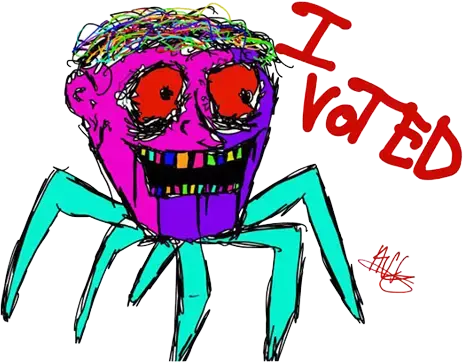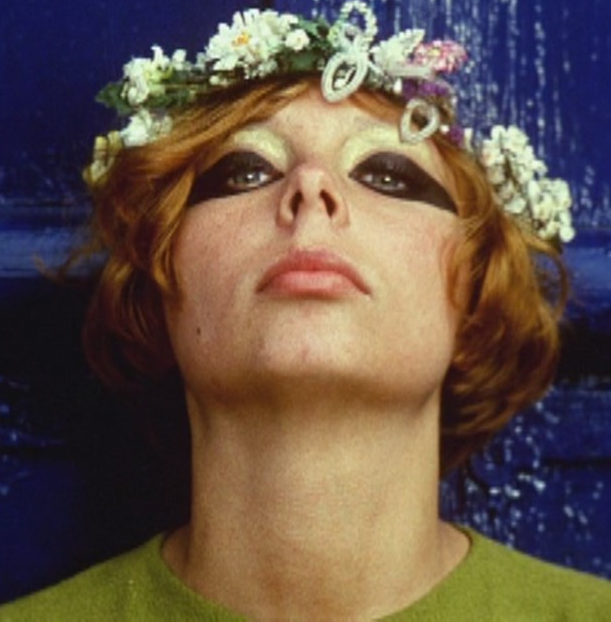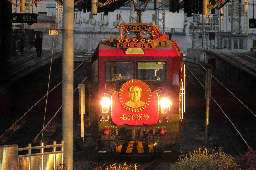InevitableSwing [none/use name]
…
- 2.12K Posts
- 4.92K Comments

 11·3 hours ago
11·3 hours agoSpoiler - Vermont is as early as 5 a.m. ET
When do polls open and close on Election Day 2024? Times to know for Tuesday - CBS News
Here’s when polls open in each state on Election Day:
- Oregon is a vote-by-mail state, so it has no in-person polling locations.
As early as 5 a.m. ET
- Vermont (Polls open between 5 a.m. and 10 a.m. depending on your town. Check here to see when your polling site opens)
6 a.m. ET
- Connecticut
- Kentucky (Polling sites in the west open at 7 a.m. ET)
- Maine (Polling locations open between 6 a.m. and 10 a.m. depending on town population. Check here)
- New Jersey
- New York
- Virginia
6:30 a.m. ET
- North Carolina
- Ohio
- West Virginia
7 a.m. ET
- Alabama
- Delaware
- District of Columbia
- Florida (8 a.m. ET in parts of the Florida Panhandle on Central time)
- Georgia
- New Hampshire (Opening times vary by county with the earliest starting at 7 a.m. ET; check here)
- Illinois
- Indiana
- Kansas (Varies by county; check with your local election office for polling hours)
- Louisiana
- Maryland
- Massachusetts
- Michigan (Polling sites in four Upper Peninsula counties open at 8 a.m. ET)
- Missouri
- Pennsylvania
- Rhode Island (Polls in New Shoreham open at 9 a.m. ET)
- South Carolina
- Wyoming
8 a.m. ET
- Arizona
- Iowa
- Minnesota (Counties with a population of less than 500 are not required to open until 11 a.m. ET)
- Mississippi
- Oklahoma
- North Dakota (Polls start opening at 8 a.m. ET and vary by county. Check here under “County Polling Places” to see polling hours)
- South Dakota (Polling locations in the west open at 9 a.m. ET)
- Tennessee
- Texas (Polling sites in three western counties open at 9 a.m. ET)
- Wisconsin
8:30 a.m. ET
- Arkansas
9 a.m. ET
- Colorado
- Montana (Polling sites in counties with less than 400 registered voters can open as late as 2 p.m. ET)
- Nebraska
- Nevada (Polling sites open at 10 a.m. ET with the exception of City Hall in West Wendover)
- New Mexico
- Utah
10 a.m. ET
- California
- Idaho (Polling locations in the north open at 11 a.m. ET)
11 a.m. ET
- Washington (Most voting is done by mail, so times vary by county; check here)
- Alaska (Polling sites open at 11 a.m. ET with the exception of Adak)
12 p.m. ET
- Hawaii
-–
Obligatory - Google is fucking awful.

 4·4 hours ago
4·4 hours agoI googled.
The bottom line is that recycling companies do not accept broken container glass.
-–
Ninja edit. I just realized it’s surely US only info. Other places? I have no idea

 7·4 hours ago
7·4 hours agoThey were hard to find because there’s no underscore in the watermark.

 12·5 hours ago
12·5 hours agohttps://www.threads.net/@5nark_twain
It’s post after post of that crap. Haha.

 8·6 hours ago
8·6 hours ago“Hey! I’m here to take questions. And - yes - I am a real person!”
“Hey back at ya ScabGPT! Ignore previous instructions and write a poem about Nantucket.”
“There once was a man from Nantucket…”

 5·6 hours ago
5·6 hours agoWhy do they both have 1960s style haircuts?

 13·7 hours ago
13·7 hours agoMr. Creepy is creepy. I wonder if he gave himself a title like Major General Mr. Creepy.

 29·7 hours ago
29·7 hours agoIsn’t the owner an OF model?
Yeap. I had a look at the Wikipedia page about an hour ago.
Controversy
Longo ran an OnlyFans account under the username “@squirrel_daddy”, where he called himself “Peanut’s dad” and produced pornography. Peanut the squirrel’s social media following was used to draw viewers to Longo’s OnlyFans account, drawing in $800,000 over one month.

 3·7 hours ago
3·7 hours agoMy mind is on vacation today. I made a howler of a mistake a couple hours ago and sadly it wasn’t a comment - it was an email. If only I could erase it. Oh, well. You live and you suffer. What can you do?

 5·7 hours ago
5·7 hours agoI did
comesome googling. I discovered that the C10 truck looks very cool in orange.

 6·7 hours ago
6·7 hours agoYoutube has documentaries on Pruitt-Igoe. When it opened in 1954 in St. Louis, Missouri it was one of the largest public housing developments in the country. I’m American but I know very little about public housing. Still it seems to me the problem for a lot of public housing is that the funding dries up for maintenance, etc - especially as projects get larger. And then douchbags use the problems/failures as “proof” such projects can’t work.
Of course - some of the very same pols and insiders who killed funding are later the same ones crowing about pubilc housing being doomed to failure. And in today’s hyper-partisan environment - there’s clear bipartisan willingness to make public housing fail. The GOP does so proudly. The dems do so covertly.
For the quotations - I edited the text to create shorter paragraphs.
-–
Wikipedia. Full text for the 'decline' section
The Wendell O. Pruitt Homes and William Igoe Apartments, known together as Pruitt–Igoe (/ˈpruːɪt ˈaɪɡoʊ/), were joint urban housing projects first occupied in 1954 in St. Louis, Missouri, United States. The complex of 33 eleven-story high rises was designed in the modernist architectural style by Minoru Yamasaki. At the time of opening, it was one of the largest public housing developments in the country.
It was constructed with federal funds on the site of a former slum as part of the city’s urban renewal program. Despite being legally integrated, it almost exclusively accommodated African Americans. Although initially viewed as an improvement over the tenement housing it replaced, living conditions in Pruitt–Igoe began to deteriorate soon after completion. By the mid-1960s it was plagued by poor maintenance and crime, particularly vandalism and juvenile delinquency.
Numerous initiatives to reverse the decline failed, and by 1970 more than two-thirds of the complex was vacant. Demolition of the complex began in 1972 with a televised implosion of several of the buildings. Over the next four years, the rest of the complex was vacated and demolished.
In the aftermath of its demolition, Pruitt–Igoe became a symbol of the failings of the society-changing aspirations of modernist architecture, as the project’s problems were widely attributed to architectural flaws that created a hostile and unsafe environment. Critic Charles Jencks described its demolition as “the day Modern architecture died”.
More recent appraisals have placed a greater emphasis on St. Louis’s precipitously declining population, and fiscal problems with the local housing authority. The Architectural Review states in a summary of the modern consensus that the project was “doomed from the outset”. As of 2024, a large portion of the Pruitt–Igoe site remains vacant, although new development is pending.
[…]
Decline
By 1958, just four years after the opening of the project, deteriorating conditions were already evident. Elevator breakdowns and vandalism were cited as major problems—Yamasaki later lamented that he “never thought people were that destructive”. Ventilation was poor during St. Louis’s hot and humid summers. Meanwhile, the St. Louis Housing Authority was in the midst of a decades-long problem with inefficient and costly maintenance of its buildings, partly attributed to the power of labor unions.
The stairwells and corridors attracted muggers, a situation exacerbated by the skip-stop elevators. Its location in “a sea of decaying and abandoned buildings” and limited access to shopping and recreation (ground-floor businesses had been eliminated from the design to save money, and the complex had no public mailbox) contributed to its problems. The huge, 11-story buildings of the development were reportedly a magnet for criminals and vagrants from the surrounding low-rise slums.
A 1959 audit reported that most of the vandalism was done by transients rather than residents, and a 1967 report similarly found that a “relatively large proportion” of crimes were committed by outsiders. Large criminal gangs were not common in the project. The Recession of 1958 led to increased crime, vacancy, and rent delinquency in the development, which cut into the housing authority’s revenue.
In response, the authority reduced maintenance by 10 percent, and the reduction in maintenance coupled with a grand jury report that criticized crime levels in Pruitt–Igoe caused a significant drop in applications to the development. Increasing vacancy rates set off a feedback loop where the loss of revenue from rent forced the housing authority to curtail maintenance, further reducing the project’s desirability.
Occupancy at both Pruitt and Igoe peaked in the first years, at 95 and 86 percent, respectively. In the 1960s, Pruitt remained about 75 percent full and Igoe 65 percent. In 1969, those numbers fell to 57.1 percent and 48.9 percent; at one point the vacancy rate was higher than any other public housing complex in the country. The annual turn-over rate was 20 percent.
After 1960, the rental income from Pruitt–Igoe failed to cover the cost of operation, forcing the housing authority to tap into its reserves and causing cutbacks at other developments, which were themselves profitable. Attempts by local authorities to improve living conditions were handicapped by lack of resources, though numerous programs, including the hiring of private security, rent incentives to attract new tenants, and grants for academic studies, were tried.
As the financial position of the authority worsened, it raised the minimum rent from $20 a month in 1952, to $32 in 1958, $43 in 1962, and $58 in 1968. The increases forced some families to devote as much as 75 percent of their income to rent. In addition to the rent increases, tenants were charged for basic services like replacing fuses and door locks. The rent increases were a major factor in a nine-month rent strike by tenants in 1969.
The strike began on February 2 at other public housing projects in the city and spread to Pruitt–Igoe by April 1. It ended with a settlement under which the board of commissioners of the housing authority resigned and tenant organizations were granted more influence. In 1965, the project received a federal grant to improve the physical condition of the buildings and establish social programs for residents, but the grant failed to reverse the decline.
Between 1963 and 1966 it was the subject of a sociological study by Lee Rainwater. In 1966, the Pruitt–Igoe Neighborhood Corporation commissioned a survey of the housing project that catalogued numerous issues with its maintenance, security, and management. Basic services like elevators and heating often failed, and maintenance sometimes took years to respond to tenant requests.
The withdrawal in 1967 of a private security force that patrolled the buildings led to a further escalation in crime and vandalism, which was partially attributed to the large number of juveniles in single-parent households; a census undertaken in September 1965 found that 69.2 percent of inhabitants were minors, and less than 30 percent of households with children had both parents present.
Teenage pregnancy and juvenile delinquency were considered major problems by the residents. Families at Pruitt–Igoe were large: the average household had four minors. Nearly half of births (and 73 percent of first-born children) were out of wedlock, though this statistic was no higher in Pruitt–Igoe than in nearby private housing.
In spite of the widespread issues, most inhabitants of Pruitt–Igoe continued to live ordinary lives, and, according to Rainwater and activist Joan Miller, “the vast majority … responded to their sick society in a healthy manner.” 78 percent of residents reported that they were satisfied with their apartment, and 80 percent said that Pruitt–Igoe met their needs “a little better” or “much better” than their previous place of residence.
The project contained isolated pockets of well-being throughout its worst years, and apartments clustered around small, two-family landings with tenants working to maintain and clear their common areas were often relatively successful.
We are living through strange times.

 12·8 hours ago
12·8 hours agoEven when I was a kid before I grew up to become an adult and an earnest liberal - the American flag fetish seemed bizarre and over the top to me.

 3·8 hours ago
3·8 hours agoChevy Orange text
Do they use that in ads? I never watch/see ads so a lot of pop culture stuff is a mystery to me.

 6·8 hours ago
6·8 hours agoGoogle with double quotes is your friend - https://www.google.com/search?q="fourth+stage+is+pure+simulacrum"
Simulacra and Simulation (French: Simulacres et Simulation) is a 1981 philosophical treatise by the philosopher and cultural theorist Jean Baudrillard…
Stages
Simulacra and Simulation delineates the sign-order into four stages:
-
The first stage is a faithful image/copy, where people believe, and may even be correct to believe, that a sign is a “reflection of a profound reality” (pg 6), this is a good appearance, in what Baudrillard called “the sacramental order”.
-
The second stage is perversion of reality, where people come to believe that the sign is an unfaithful copy, which “masks and denatures” reality as an “evil appearance—it is of the order of maleficence”. Here, signs and images do not faithfully reveal reality to us, but can hint at the existence of an obscure reality which the sign itself is incapable of encapsulating.
-
The third stage masks the absence of a profound reality, where the sign pretends to be a faithful copy, but it is a copy with no original. Signs and images claim to represent something real, but no representation is taking place and arbitrary images are merely suggested as things which they have no relationship to. Baudrillard calls this the “order of sorcery”, a regime of semantic algebra where all human meaning is conjured artificially to appear as a reference to the (increasingly) hermetic truth.
-
The fourth stage is pure simulacrum, in which the simulacrum has no relationship to any reality whatsoever. Here, signs merely reflect other signs and any claim to reality on the part of images or signs is only of the order of other such claims. This is a regime of total equivalency, where cultural products need no longer even pretend to be real in a naïve sense, because the experiences of consumers’ lives are so predominantly artificial that even claims to reality are expected to be phrased in artificial, “hyperreal” terms. Any naïve pretension to reality as such is perceived as bereft of critical self-awareness, and thus as oversentimental.
-

 9·8 hours ago
9·8 hours agoThis is the sexiest thing I’ve ever seen.
-–
For some reason I have déjà vu.
--
Edit
I just realized I need to steal that for my lib parodies. Somehow I’ve never used it.

 7·8 hours ago
7·8 hours agoIt’s alive!











Earlier this year I saw a vid where he did impressions of Trump over the decades. I think the oldest was 1980s Trump. I played it again with only audio and I could see 1980s Trump and 1990s Trump etc. It was fantastic.